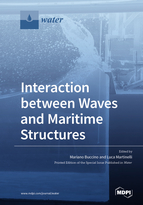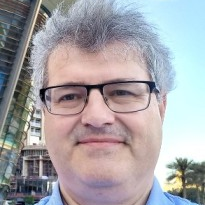Interaction between Waves and Maritime Structures
A special issue of Water (ISSN 2073-4441). This special issue belongs to the section "Oceans and Coastal Zones".
Deadline for manuscript submissions: closed (31 October 2020) | Viewed by 48326
Special Issue Editors
Interests: wave energy converters; wave energy assessment; wave–structure interaction; physical modelling; numerical simulations
Special Issues, Collections and Topics in MDPI journals
Interests: wave–structure interaction, with particular focus on the impulsive loads applied by breaking waves; research and development of floating breakwaters and wave energy converters, including their mooring system; coastal flooding risk, coastal erosion, and the relative mitigation measures
Special Issues, Collections and Topics in MDPI journals
Special Issue Information
Dear Colleagues,
This Special Issue addresses the theoretical and experimental studies on the interaction between waves and maritime structures, such as ports (e.g., vertical, composite, and floating and rubble mound breakwaters), coastal defenses (e.g., revetments, groins, low crested structures, and dunes), or innovative designs fostering the sustainable development of the maritime environment (including wave energy converters).
The wave structure interaction encompasses phenomena from a medium (e.g., port wave penetration, wave induced circulations, and run-up on beaches) to local scale (e.g., wave transmission and reflection, overtopping, wave run-up, and quasi-static and impact loads). Investigations on the stability of the structures in relation to the wave action, dynamics of moored floaters, and geotechnical aspects related to maritime structures, are fully consistent with the scopes of the Issue.
This call welcomes theoretical analyses, case studies, physical and numerical model investigations, and simplified and practical approaches to improve the state-of-art on the complex world of the maritime structure design, highlighting possible routes for reducing uncertainties and risks. Studies with clear practical fallouts and specific design guidelines are encouraged.
Prof. Dr. Mariano Buccino
Prof. Dr. Luca Martinelli
Guest Editors
Manuscript Submission Information
Manuscripts should be submitted online at www.mdpi.com by registering and logging in to this website. Once you are registered, click here to go to the submission form. Manuscripts can be submitted until the deadline. All submissions that pass pre-check are peer-reviewed. Accepted papers will be published continuously in the journal (as soon as accepted) and will be listed together on the special issue website. Research articles, review articles as well as short communications are invited. For planned papers, a title and short abstract (about 100 words) can be sent to the Editorial Office for announcement on this website.
Submitted manuscripts should not have been published previously, nor be under consideration for publication elsewhere (except conference proceedings papers). All manuscripts are thoroughly refereed through a single-blind peer-review process. A guide for authors and other relevant information for submission of manuscripts is available on the Instructions for Authors page. Water is an international peer-reviewed open access semimonthly journal published by MDPI.
Please visit the Instructions for Authors page before submitting a manuscript. The Article Processing Charge (APC) for publication in this open access journal is 2600 CHF (Swiss Francs). Submitted papers should be well formatted and use good English. Authors may use MDPI's English editing service prior to publication or during author revisions.
Keywords
- waves
- maritime structures
- hydraulic response
- structural response
- physical modeling
- numerical modeling
- case study
- design equations and guidelines







